Nobody Lives Forever

Brief Synopsis
Cast & Crew
Jean Negulesco
John Garfield
Geraldine Fitzgerald
Walter Brennan
Faye Emerson
George Coulouris
Film Details
Technical Specs

Synopsis
On his release from the army hospital on Governor's Island in New York, former confidence man Nick Blake learns that his girl friend, Toni Blackburn, has opened a nightclub using money that he gave her for safe keeping while he was in the service. Together with his partner, Al Doyle, Nick visits the club, where Toni informs him that she lost his investment during the club's first year and then sold the club to Chet King. When Nick discovers that Toni is also romantically involved with King, he forces King to return his money with interest. Nick and Al then leave for Los Angeles, where they contact Pop Gruber, another confidence man. Although Nick insists that he does not want to work for a while, Pop learns that Doc Ganson has targeted a wealthy widow for a swindle and, with Al's help, persuades Nick to participate. Using the name Nick Lloyd, Nick checks into the same hotel where Gladys Halvorsen, the widow, is staying with her business manager, Charles Manning. To Nick's surprise, Gladys is beautiful and charming, and soon he is spending a great deal of time with her. He succeeds in interesting Manning in his fictitious salvage business, but stops short of actually taking Gladys' money. During a trip to the mission at San Juan Capistrano, Nick is reminded of the ruined churches that he saw in Italy during the war and starts to question his involvement in the swindle. His doubts are intensified by the fact that he has fallen in love with Gladys. When Doc and Nick's other partners demand that he close the deal and pay them their share, he decides to pay them off with his own money and leave town. In the meantime, Manning has grown suspicious and discovered Nick's real identity. At first Gladys refuses to believe the allegations, but when she confronts Nick, he admits the truth, adding that he really does love her. When Toni, who is now in Los Angeles, hears what Nick intends to do, she believes that he will marry Gladys for her money. She tells Doc her theory, and Doc demands that Nick pay him thirty percent of Gladys' entire two million dollar fortune rather than the thirty thousand he was promised for the swindle. When Nick refuses, Doc and his men kidnap Gladys. Pop, Al and Nick find the deserted pier where Doc is holding her, and Pop and Doc are killed in the ensuing shootout. The police arrive in time to arrest the rest of the gang, and Nick and Gladys are now free to pursue their romance.

Director

Jean Negulesco
Cast

John Garfield

Geraldine Fitzgerald
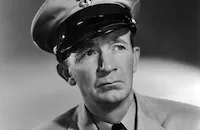
Walter Brennan
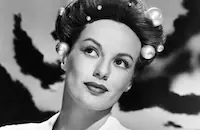
Faye Emerson

George Coulouris

George Tobias

Robert Shayne
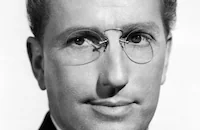
Richard Gaines
Dick Erdman
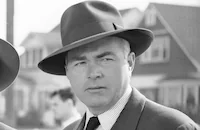
James Flavin
Ralph Peters
Alex Havier
William Edmunds
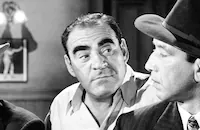
Ralph Dunn
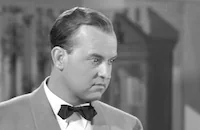
Grady Sutton
Allen Ray
Roger Neury
Jack Chefe
Harry Seymour
Rudy Friml Jr.
Fred Kelsey
Wallace Scott
Albert Van Antwerp
Charles Sullivan
Paul Power
George Meader
Virginia Patton

Robert Arthur

Marion Martin
Cyril Ring
William Forrest
Adrian Droeshout
Joel Friedkin

Lee Phelps
Crew
Gerald W. Alexander
Milo Anderson
Robert Buckner
W. R. Burnett
Herschel Daugherty
Paul Detlefsen
Adolph Deutsch
Edwin Du Par
Arthur Edeson
Rudi Fehr
Leo F. Forbstein
Charles David Forrest
M. K. Jerome
William Mcgann
Jerome Moross
Max Parker
Hugh Reticker
Casey Roberts
Jack Scholl
Bert Shipman
Dolph Thomas
Willard Van Enger
Jack L. Warner
Robert G. Wayne
Perc Westmore

Photo Collections
Videos
Movie Clip
Trailer
Hosted Intro
Film Details
Technical Specs

Articles
Geraldine Fitzgerald (1913-2005)
Born in Dublin on November 24, 1913, Fitzgerald was educated for a time in a convent school in London. Back in her native Dublin, she happily accompanied her aunt, the Irish actress Shelah Richards, to a theater one afternoon when the director mistook her for an actress, and instructed her "to go backstage and change." An inauspicious start, but it gave her the acting bug. She made her stage debut in 1932 in Dublin's Gate Theater and later appeared in a few forgettable British films: Open All Night (1934), The Ace of Spades, Three Witnesses (both 1935). She made the trip across the Atlantic in 1938 to act with Orson Welles and his Mercury Theater, but agents from Warner Bros. quickly signed her and she was soon off to Hollywood.
She made her film debut in 1939 supporting Bette Davis in Dark Victory, but it was her performance in a second film later in the year that proved to be the most memorable of her career - the role of Isabella Linton in Wuthering Heights. She earned an Oscar® nomination for her turn and stardom should have been around the corner, but Fitzgerald's feuding with studio head Jack Warner (he refused to let her return to the New York stage and she would refuse parts that she thought were inferior) led to some lengthy suspensions of unemployment. Irregardless, Fitzgerald still had some shining moments at Warner Bros. the heady melodrama The Gay Sisters (1942); the superb espionage thriller Watch on the Rhine (1943); Robert Siodmak's terrific, noirish thriller The Strange Affair of Uncle Harry (1945); and a tough crime drama where she played opposite John Garfield Nobody Lives Forever (1946).
Fitzgerald returned to New York by the '50s, and found much work in many of the live television dramas that were so popular in the day: Goodyear Television Playhouse, Lux Video Theatre, Studio One, Schlitz Playhouse of Stars; and even some taped television shows: Naked City, Alfred Hitchcock Presents in between her stage demands.
She did return to the screen by the mid-'60s and proved herself a fine character actress in films like The Pawnbroker (1965); Rachel, Rachel (1968); Harry and Tonto (1974); a wonderfully memorable comic turn as Dudley Moore's feisty grandmother in Arthur (1981); and yet another noteworthy performance as Rose Kennedy in the acclaimed mini-series Kennedy (1983). She also appeared in a few television programs: St. Elswhere, Cagney & Lacey, and The Golden Girls before ill-health forced her to retire by the early '90s. Among the relatives that survive her are her son, director Michael Lindsay-Hogg (Brideshead Revisited; a daughter, Susan Scheftel; and her great-niece, the English actress Tara Fitzgerald.
by Michael "Mitch" Toole

Geraldine Fitzgerald (1913-2005)
Nobody Lives Forever
John Garfield stars as Nick Blake, a racketeer returning to the U.S. after serving in World War II as a sergeant in the First Army. His homecoming is no hero’s welcome. Betrayed by both his wife and his former gambling partners, Blake has to fight to get back his money. He succeeds and heads off for rest and relaxation in California but, before long, he is pulled into a scam to bilk a rich, young widow (Geraldine Fitzgerald).
W. R. Burnett, the author of Little Caesar (1931) and The Asphalt Jungle (1950), adapted the screenplay from his own novel I Wasn’t Born Yesterday. Warner Brothers initially announced Humphrey Bogart for the lead but he turned the film down and the role went to John Garfield. Garfield was not that happy about the role either, but he took the part because of his admiration for the acting of his co-star Geraldine Fitzgerald, the Irish actress who had been a sensation on Broadway in Orson Welles’ 1938 production of Heartbreak House. Fitzgerald would put her film career on hold shortly after the release of Nobody Lives Forever to return to the Broadway stage.
Nobody Lives Forever went into production in 1944 but was shelved for over two years by Warner Brothers, not being released until November 1, 1946. Warner Brothers produced a number of films during World War II that were held up for later release such as The Big Sleep (1946), which also had a two-year gap between its production and release. Perhaps another reason for the delay was Warner Brothers’ desire to get what they could out of Garfield’s rising popularity when they knew he would leave them shortly. Jack Warner wrote in a September 7, 1945 telegram: “Confidentially, impossible sign up Garfield after he makes one more picture for us. He has forgotten days when I picked him up when making six bits weekly.”
Producer: Robert Buckner, Jack Warner
Director: Jean Negulesco
Screenplay: W.R. Burnett
Cinematography: Arthur Edeson
Film Editing: Rudi Fehr
Art Direction: Hugh Reticker
Music: Adolph Deutsh
Cast: John Garfield (Nick Blake), Geraldine Fitzgerald (Gladys Halvorsen), Walter Brennan (Pop Gruber), Faye Emerson (Toni Blackburn), George Coulouris (Doc Ganson), George Tobias (Al Doyle).
BW-110m. Closed captioning.
by Brian Cady
Nobody Lives Forever
Quotes
Trivia
Humphrey Bogart refused the role of Nick Blake.
Notes
A 6 August 1941 Hollywood Reporter news item notes that Humphrey Bogart and Ann Sheridan were to star in the film, and a November 25, 1941 news item in Los Angeles Examiner states that W. R. Burnett wrote his novel with Bogart in mind. At that time, according to a August 6, 1941 New York Times news item, Robert Lord was to direct the story, which concerned a "New York night club owner and his singer-wife who come to Hollywood to pursue their careers." Warner Bros. reportedly paid $20,000 for the rights to Burnett's story. According to a press release, Stuart Erwin and Ruth Donnelly were to play comedy roles in the film. Other Hollywood Reporter news items add the following information about the production: Shots of Wilshire Blvd., the Ambassador Hotel, and Union Depot are seen in the film. Los Angeles Plaza was recreated on the back lot. According to a news item in Motion Picture Herald, the film was shown to the men of the 80th Blue Ridge Division in Kempten, Germany in early September 1945. Jane Wyman starred with Ronald Reagan in a November 17, 1947 Lux Radio Theatre broadcast of the story.


















